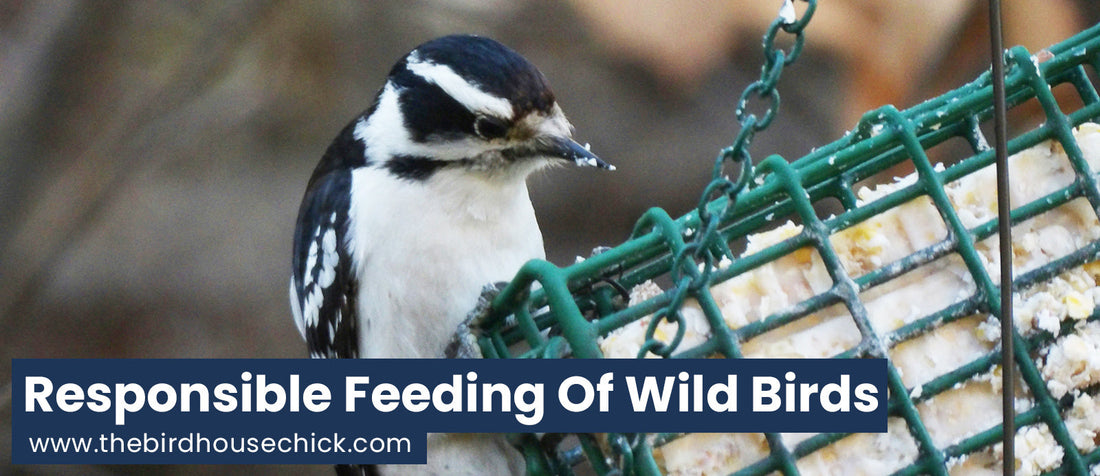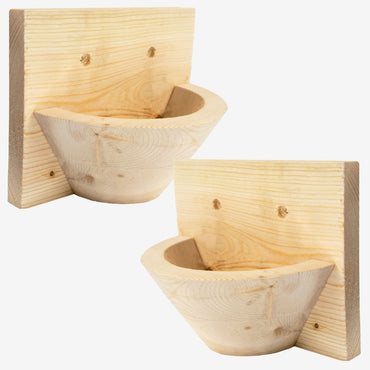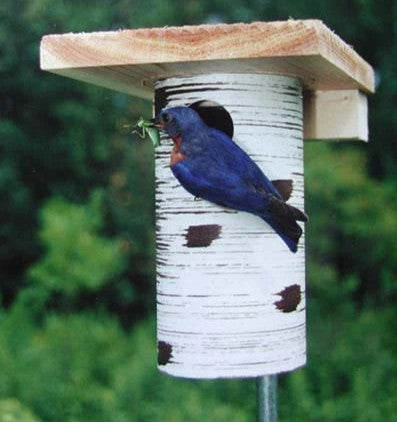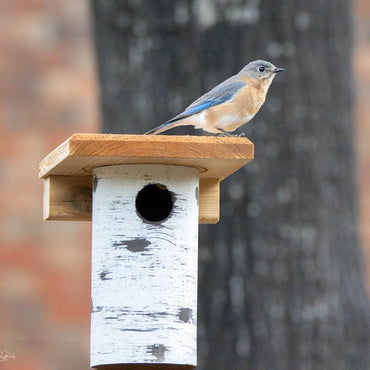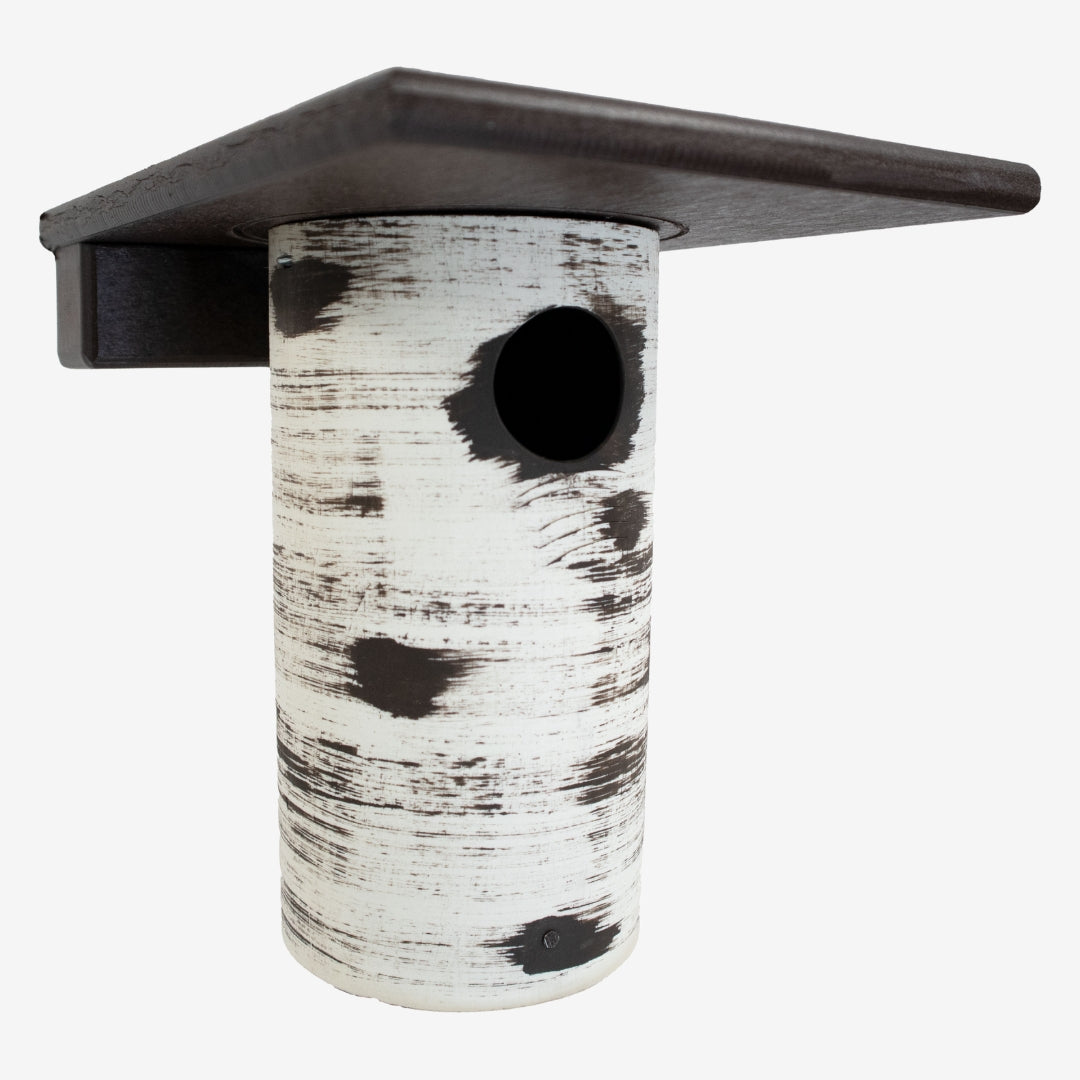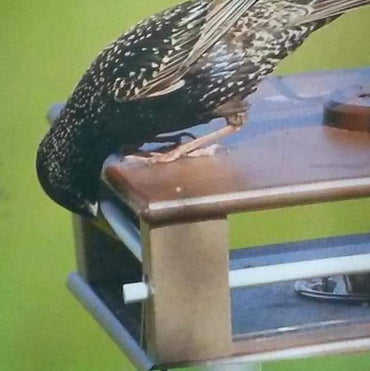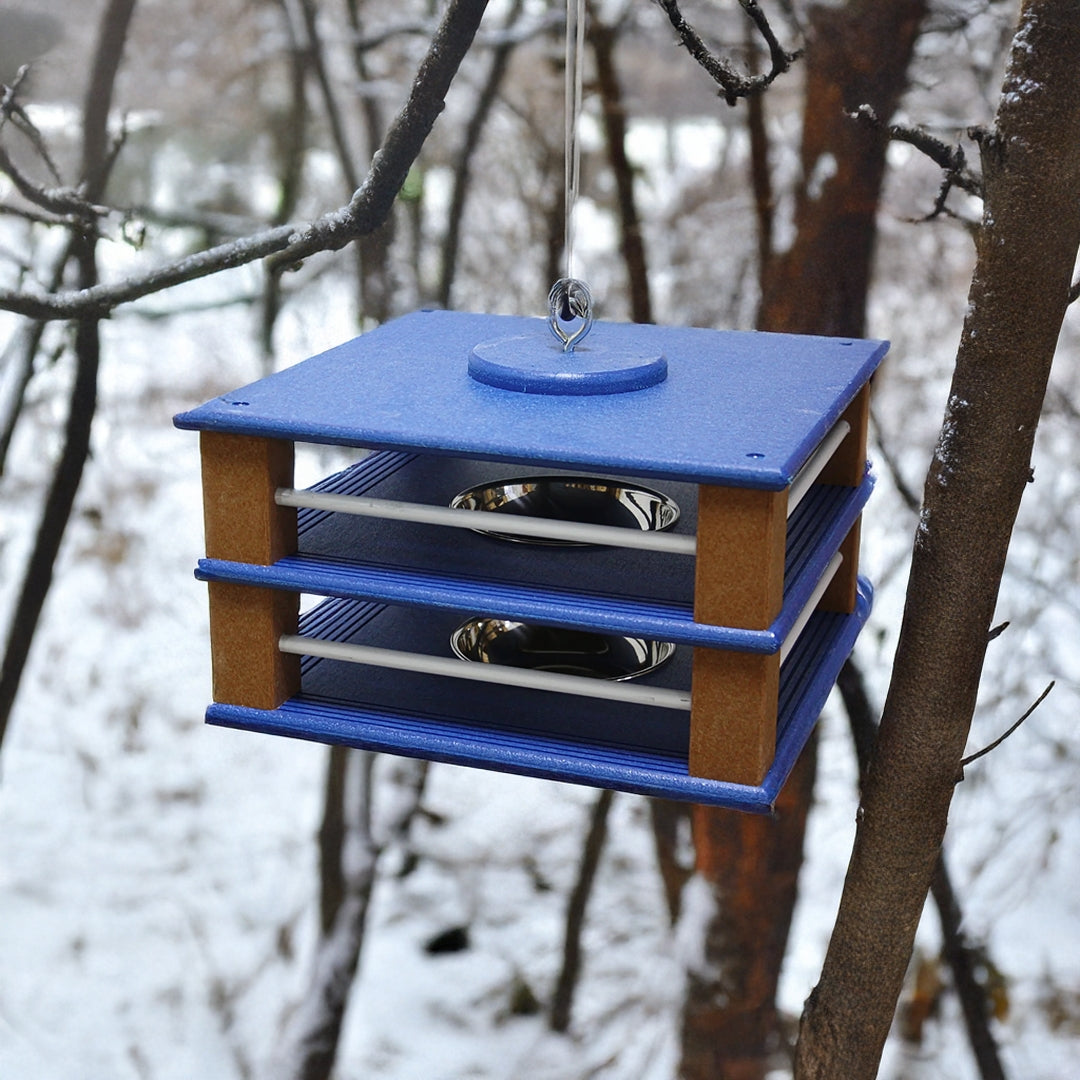The first thing professional animal keepers do is research the natural history of the animals in their care. What are their nutritional, habitat, and behavioral requirements for optimum health?
Two Major Issues of Nutritional Concern
In regard to nutrition, our attention was first drawn to suet cakes. They didn't seem like a very healthful option - all that fat, and even worse - saturated fat. Nearly all, if not all, commercial fat cakes are made with suet (beef fat). The suggestion that vegetable fat might be a more healthful alternative has been consistently rejected.
What are the nutritional implications of using vegetable fat instead of suet in avian food cakes? What are the relevant issues to be considered? To begin with, there are two major issues of nutritional concern in all organisms - energy and nutrients.
1. Energy
 The capacity for flight is very demanding in terms of energy. The dietary preferences of organisms that have evolved the capacity for flight reflect the need to maximize energy intake and minimize weight gain.
The capacity for flight is very demanding in terms of energy. The dietary preferences of organisms that have evolved the capacity for flight reflect the need to maximize energy intake and minimize weight gain.
Birds eat to satisfy energy demands. The most concentrated energy source in any diet is fat at about nine calories per gram. This is at least part of the reason birds demonstrate a preference for suet cakes and seeds that have a high fat content like sunflower seeds.
Since all fats have approximately the same energy concentration, how well a particular fat meets the energy needs of birds is basically a function of its digestibility.
The Digestibility of Fat
The digestibility of fat is determined by the fatty acids contained in it. Saturated fats are difficult to digest; unsaturated fats are relatively easy to digest. The higher the percentage of saturated fatty acids in a fat the more difficult the fat is to digest.
According to Dr. Kirk Klasing, an avian nutrition expert at the Center for Avian Biology, University of California at Davis and author of Comparative Avian Nutrition:
- Beef Fat is very highly saturated and is the most difficult fat to digest
- Pig Fat (Lard) is a little easier to digest because it is slightly less saturated
- Vegetable (with the exception of coconut and palm oils), Poultry, and Fish Oils are easiest to digest because they are low in saturated fatty acids and high in unsaturated fatty acids
In terms of digestibility, vegetable, poultry and fish oils are much better for birds than lard or suet. Unfortunately it is difficult to make a dietary product with oil due to its fluid consistency. A firm or solid product is much easier to handle.
Vegetable oils can be partially hydrogenated (saturated) in order to raise their melting point. In fact, the melting temperature of vegetable shortening is a function of its percentage of saturation. For vegetable shortening cakes, the most desirable fat would have a melting temperature only high enough to remain firm at maximum ambient temperatures.
Since vegetable shortening contains less than half the saturated fatty acids and more than eight times the unsaturated fatty acids contained in suet, it seems clear that vegetable shortening is significantly better than beef suet in terms of digestibility.
2. Nutrients
 In addition to being the most concentrated source of energy in a diet, fat also provides other nutritional benefits. Fat acts as a carrier for the fat-soluble vitamins A, D, E, and K. These vitamins are essential for good health.
In addition to being the most concentrated source of energy in a diet, fat also provides other nutritional benefits. Fat acts as a carrier for the fat-soluble vitamins A, D, E, and K. These vitamins are essential for good health.
There are also three essential unsaturated fatty acids - linoleic, arachidonic, and linolenic - that are required nutrients for good health. Linoleic acid, the most important of the three, can't be synthesized in the body and can only be obtained from the diet. The other two fatty acids can be synthesized in the body from linoleic acid.
Suet contains very little unsaturated fatty acid (3%) while 25% of vegetable shortening consists of unsaturated fatty acids, primarily linoleic acid. Vegetable shortening also contains a relatively high level vitamin E a powerful antioxidant that inhibits rancidity.
Suet has very low levels of vitamin E and therefore is more prone to rancidity or oxidation. As in the case of digestibility discussed above, the evidence supports the conclusion that vegetable shortening is better than beef suet in terms of nutritional composition.
High Metabolic Rate & Nutritional Deficiencies
Another issue of concern is the fact that birds have a very high metabolic rate that makes them vulnerable to nutritional deficiencies. Since birds eat to meet their metabolic energy needs, there is a risk that they will develop a preference for the high fat diet supplied by fat cakes.
Commercial suet cakes are not formulated to meet the nutritional requirements of birds. They are intended to supply energy and nothing more. They food items like Milo, cracked corn, sunflower seeds, and so on, incorporated into the fat are added as attractants to birds.
We believe that the practice of offering suet cakes to wild birds, while providing a source of vital energy, may expose the birds, particularly in winter, to nutritional deficiencies that can impair their ability to fend off disease.
Conclusion
Fat is essential in the diet of birds. As animal care professionals, we must conclude that, based on the results of our research, vegetable shortening is the preferred choice in fat cakes. Furthermore, the commercial suet cakes currently available do not and are not intended to meet the nutritional needs of birds.
Therefore, we have developed a line of food cakes that incorporate a complete diet formulated to meet all the nutritional requirements of birds into a vegetable-shortening matrix. We believe that our products are a significant step toward the responsible feeding of wild birds.
Author: Willis J. Whittaker, 30+ years experience as an animal care professional, BS in Natural Resource Management & BA in Environmental Ethics. http://www.aviancuisine.com
Article Source: http://EzineArticles.com/?expert=Bill_Whittaker

